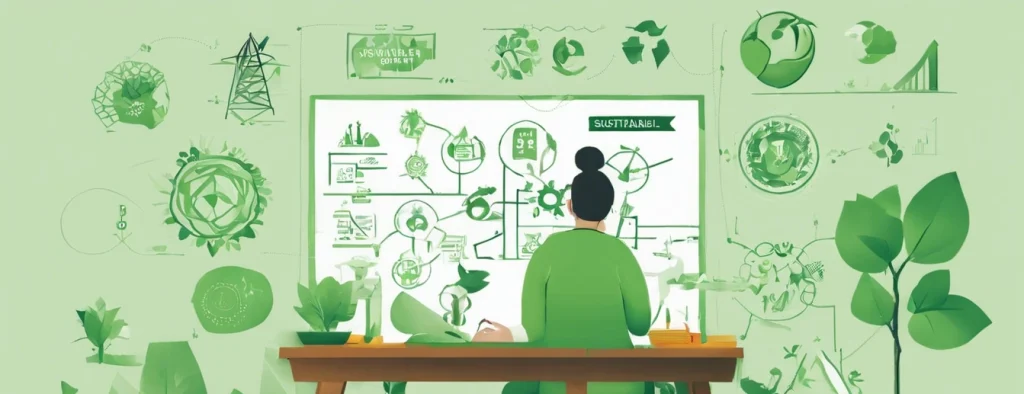Media Design and Biodiversity
- Instructor Prep: 2 hours | Seminar: 1-2 class slots
- Keywords: Biodiversity Loss | News Values | Social Media
INTRODUCTION
This teaching guide is meant to be easily integrated into existing classes in the field of Media and Communication Studies. The guide is created for teachers and professors interested in including environmental issues as examples for their students to understand the concepts in their introductory courses. This particular guide uses the topic of Biodiversity Loss to aid students in understanding the concept of Media Design. It also hopes to create an understanding of the vital role communication can play in the creation of a sustainable future for our planet.
LEARNING OUTCOMES
- Students can explain the importance of media design and news values in public perception and behavioral change
- Students can explain how Media Design can be used to help biodiversity conservation efforts
MEDIA DESIGN AND NEWS VALUES
Media design is an interdisciplinary field that combines elements of communication design, graphic design, and digital media to create visual and interactive content for a variety of platforms. It involves the strategic use of images, typography, space, and color to communicate messages and create experiences for users. Media designers work across different mediums, including print, digital, and video, to craft compelling narratives and engage audiences.
Media design shapes how information is presented and consumed. Good media design can enhance understanding, retention, and engagement with information, while poor design can lead to confusion or disinterest. Importantly, research has shown that it influences consumer behaviour and can drive social change by raising awareness about important issues. In terms of sustainability, media design contributes to the creation of content that is not only aesthetically pleasing but also environmentally conscious and socially responsible. Designers are increasingly considering the lifecycle of their creations, from the materials used in physical products to the energy consumption of digital media.
Trying to create social impact through media design, one can look at the concept of news values. First introduced by Johan Galtung and Mari Holmboe Ruge, news values are a series of factors that help establishing whether an event becomes news. They also found that those values are not universal, with noticeable changes across cultures and mediums. Still, most factors have been found to be consistently applied across a range of outlets. These values are: timeliness, significance, proximity, prominence, conflict, human interest and unusualness.
The addition of social media to the media landscape means that media design and the decisions on news values, or rather the task of agenda setting, has become democratised. This has far reaching implications for the dissemination and validation of information.
BIODIVERSITY LOSS
Biodiversity is the variety of life on Earth, ranging from single-cell organisms up to blue whales. Through the increased pressure of humanity, biodiversity loss is now a significant threat. For example, a 69% decline in global populations of mammals, fish, birds, reptiles and amphibians has been estimated by the WWF in their Living Planet Report. This is due to a range of factors, including habitat fragmentation, pollution, climate change, and overexploitation (for example overfishing).
Biodiversity is of paramount importance to humanity due to the ecosystem services it provides. These ecosystem services provide goods like crops or freshwater, provide non-material benefits like recreation, and regulate natural processes like temperature regulation. For example, many different insects are important for pollination of our crops, and we depend on them for our food. Yet, in many regions their numbers are declining, sometimes by 80% or more. This can cause serious issues for our long-term food production.
Local Actions Videos
CONNECTING THE DOTS
Biodiversity loss has received significant attention in the media, ranging from news items in newspapers, clips on social media to movies. However, retaining attention about the issue of biodiversity loss for the general public remains tricky due to a variety of reasons.
- Complexity: Biodiversity loss is a complex issue with fewer practical units of measurement and less scientific consensus compared to topics like climate change, making it harder to convey in simple terms.
- Economic Engagement: Biodiversity does not engage major economic sectors in the same direct way as climate change, which often leads to its impact being perceived as less immediate or less newsworthy.
- Local vs. Global: Media coverage often focuses on global issues, while biodiversity can be a very local issue, requiring a more nuanced and localized approach to appreciate its importance.
These factors contribute to the challenge of designing impactful media highlighting the issue of biodiversity loss. Within media design action can be taken to overcome these challenges. For example, WWF tries to take action by using energetic and visual appealing media to highlight the issue:
Thus, there is a vital role for media design to ensure that the news value remains high, taking these challenges at heart.
LOCAL ACTION AND IN CLASS ACTIVITES
In this Local Action we ask you to either create political art, or find good examples to share with our community. As this is about your own expression, you will have a lot of liberty to execute this. For example:
- You can work alone, or in a group
- You can choose the type of art form. As long as you can justify why it is political art
- You can create your own political art
- Record a song, make a painting, write an essay or a poem, create a GIF, do a one-minute stand-up comedy, make a cartoon
- Or, you can find work that inspires you and share this
- Make a Spotify playlist with environmental music, find artwork, share a poem, make a list of movies that address climate change or environmental issues, write a review on a book/movie/doc etc.
This In class activity takes approx. 45 minutes
- Divide students into groups and have them find examples of media design on the topic of biodiversity loss (or conservation).
- Ask them to reflect on the examples: are they developed in such a way that they overcome the challenges related to retaining attention on the topic (Complexity, Economic Engagement, and Local vs Global)
- Finally, have them reflect how the social media examples could be improved to increase the news value
This in class activity takes approx. 45 minutes
- In groups, have students develop a media design strategy on biodiversity for an NGO (for example, WWF, or a local NGO in their community)
- Have them consider how they will create news value, and how they will overcome challenges related to retaining attention on the topic (Complexity, Economic Engagement, and Local vs Global)
- Discuss their final product in class, and have students feedback (both constructive and positive) on their ideas
RESOURCES
Brunet, N.D., Dagenais, D., Breux, S. et al. A characterization of media representation of biodiversity and implications for public perceptions and environmental policy: the case of Québec, Canada. Environ Dev Sustain 22, 1655–1669 (2020).
Galtung, J., & Ruge, M. H. (1965). The Structure of Foreign News: The Presentation of the Congo, Cuba and Cyprus Crises in Four Norwegian Newspapers. Journal of Peace Research, 2(1), 64-90.
Proches. S. (2022) Naturally low biodiversity is getting a raw deal in the media.Front. Conserv. Sci. 3:960788.
Richardson, M.: GC Insights: Nature stripes for raising engagement with biodiversity loss, Geosci. Commun., 6, 11–14
Paulussen, S., Van Aelst, P. (2021). News Values in Audience-Oriented Journalism: Criteria, Angles, and Cues of Newsworthiness in the (Digital) Media Context. In: Temmerman, M., Mast, J. (eds) News Values from an Audience Perspective. Palgrave Macmillan, Cham.






